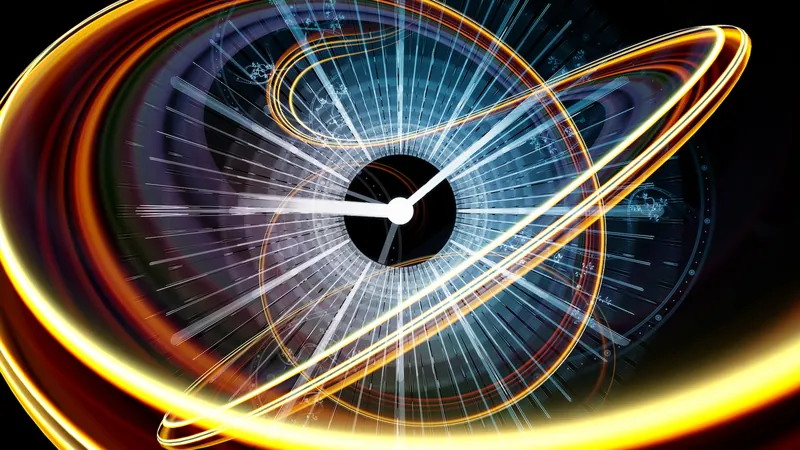
Introducing the NIST-F4: The Atomic Clock That Will Revolutionize Timekeeping
2025-05-07
Author: Wei Ling
A Revolutionary Leap in Precision Timekeeping
In an astonishing breakthrough, scientists have unveiled one of the most accurate atomic clocks to date, poised to redefine the very essence of time. Meet the NIST-F4, a marvel of modern science that boasts an extraordinary level of precision—it would only drift less than a second over a staggering 100 million years!
The Science Behind the Clock
Crafted by experts at the National Institute of Standards and Technology (NIST) in Boulder, Colorado, the NIST-F4 operates by harnessing the subtle vibrations of cesium atoms subjected to microwave beams. According to the creators, if this clock had been started during the age of dinosaurs, it would be accurate down to less than a second today.
Details of the clock's intricate workings were published in the journal *Metrologia* on April 15. Awaiting final approval, the NIST-F4 is set to join an elite group of about 450 atomic clocks worldwide, which are integral in maintaining Coordinated Universal Time (UTC)—the global standard for precise time measurement.
The Growing Demand for Precision
As our reliance on accurate timekeeping skyrockets—impacting everything from daily activities to multibillion-dollar financial transactions—scientists are in a constant race to create ever more reliable reference clocks. Unlike standard timepieces, these atomic clocks provide an unparalleled accuracy that keeps the world running smoothly.
How It Works: The Fountain Clock Mechanism
The NIST-F4 is classified as a fountain clock, featuring a cloud of cesium atoms chilled near absolute zero with lasers. These atoms are propelled upwards by powerful laser beams and fall freely through a microwave beam designed to stimulate their oscillations, which occur 9,192,631,770 times per second—defining the international second.
Overcoming Challenges for Ultimate Accuracy
To ensure the NIST-F4's unmatched reliability, researchers meticulously accounted for every tiny source of interference that could disturb the oscillations of the cesium atoms. This involved addressing issues like quantum cross-talk, microwave leakage, and electromagnetic distortion. The development team embarked on this complex journey in 2020, refining the operational mechanics of the clock as they built a new microwave cavity from the ground up.
A Precise Future Ahead
With a systematic uncertainty of just 2.2 × 10⁻¹⁶, the NIST-F4 is poised to lose less than a second every 140 million years, a feat made possible by ongoing advancements in quantum measurement techniques and laser technology. As it ticks alongside its predecessor, the NIST-F3, the NIST-F4 will operate independently about 90% of the time, ensuring continuous, precise timekeeping.
Data from both clocks will be periodically sent to the International Bureau of Weights and Measures (BIPM) to help calibrate UTC, keeping the world's time aligned and synchronized.



 Brasil (PT)
Brasil (PT)
 Canada (EN)
Canada (EN)
 Chile (ES)
Chile (ES)
 Česko (CS)
Česko (CS)
 대한민국 (KO)
대한민국 (KO)
 España (ES)
España (ES)
 France (FR)
France (FR)
 Hong Kong (EN)
Hong Kong (EN)
 Italia (IT)
Italia (IT)
 日本 (JA)
日本 (JA)
 Magyarország (HU)
Magyarország (HU)
 Norge (NO)
Norge (NO)
 Polska (PL)
Polska (PL)
 Schweiz (DE)
Schweiz (DE)
 Singapore (EN)
Singapore (EN)
 Sverige (SV)
Sverige (SV)
 Suomi (FI)
Suomi (FI)
 Türkiye (TR)
Türkiye (TR)
 الإمارات العربية المتحدة (AR)
الإمارات العربية المتحدة (AR)